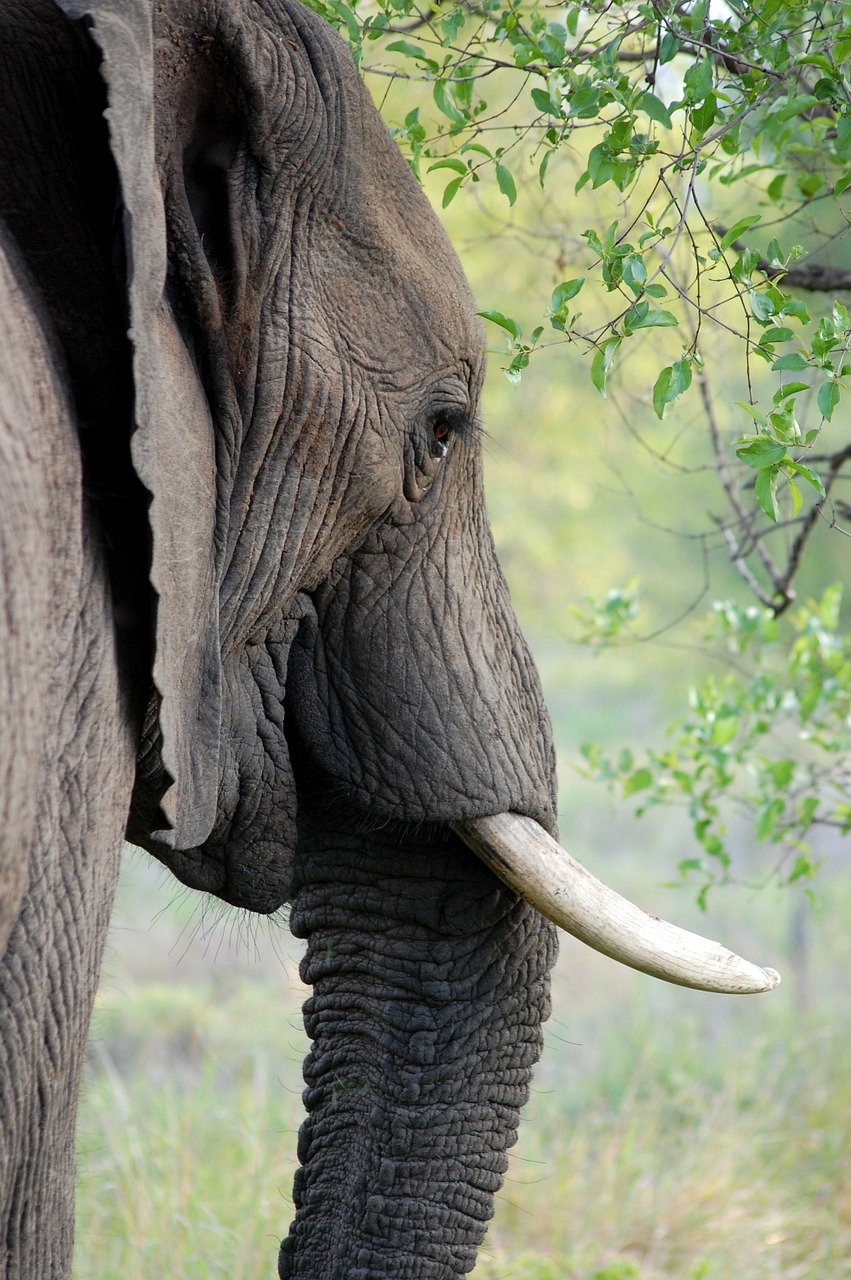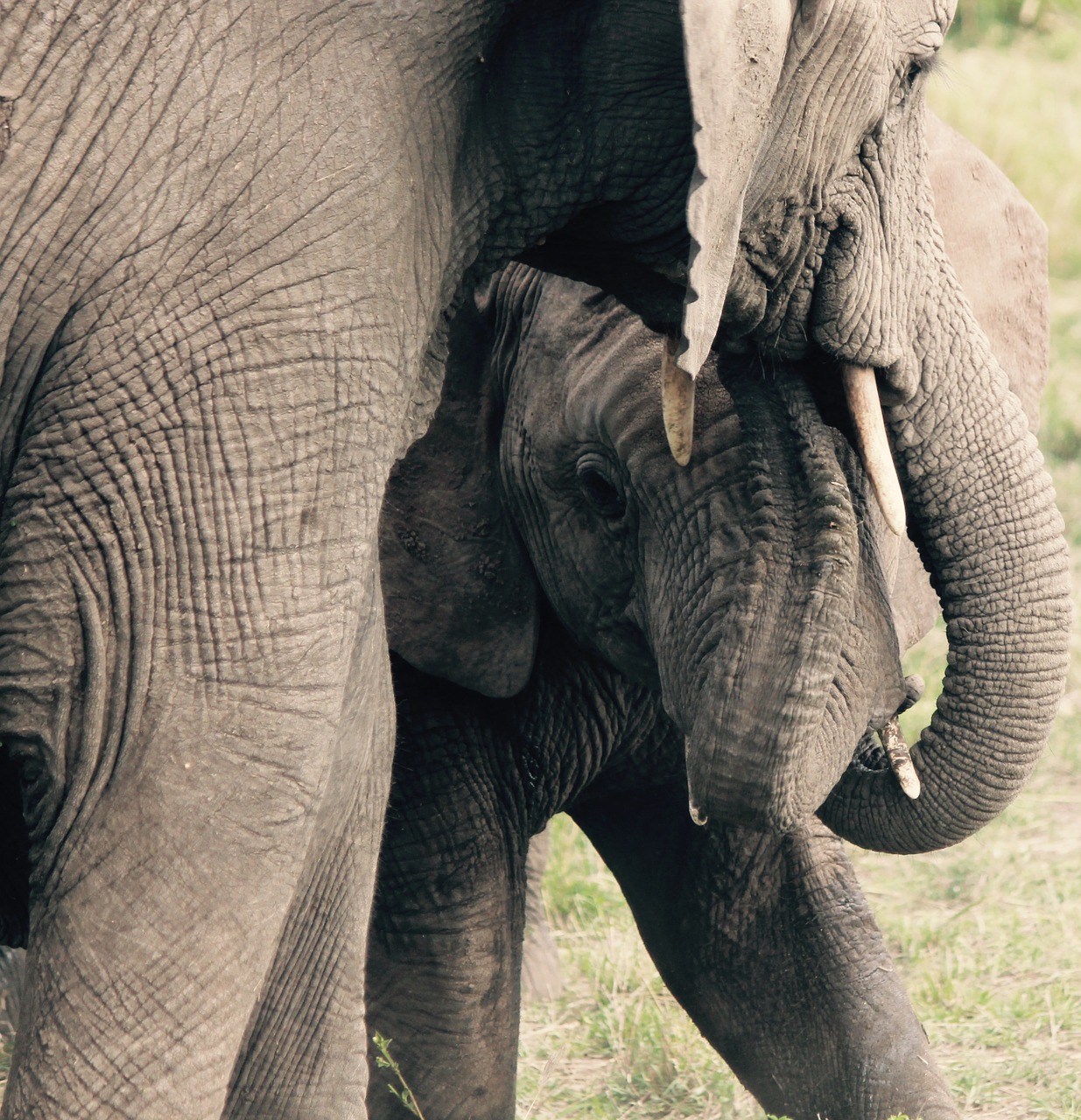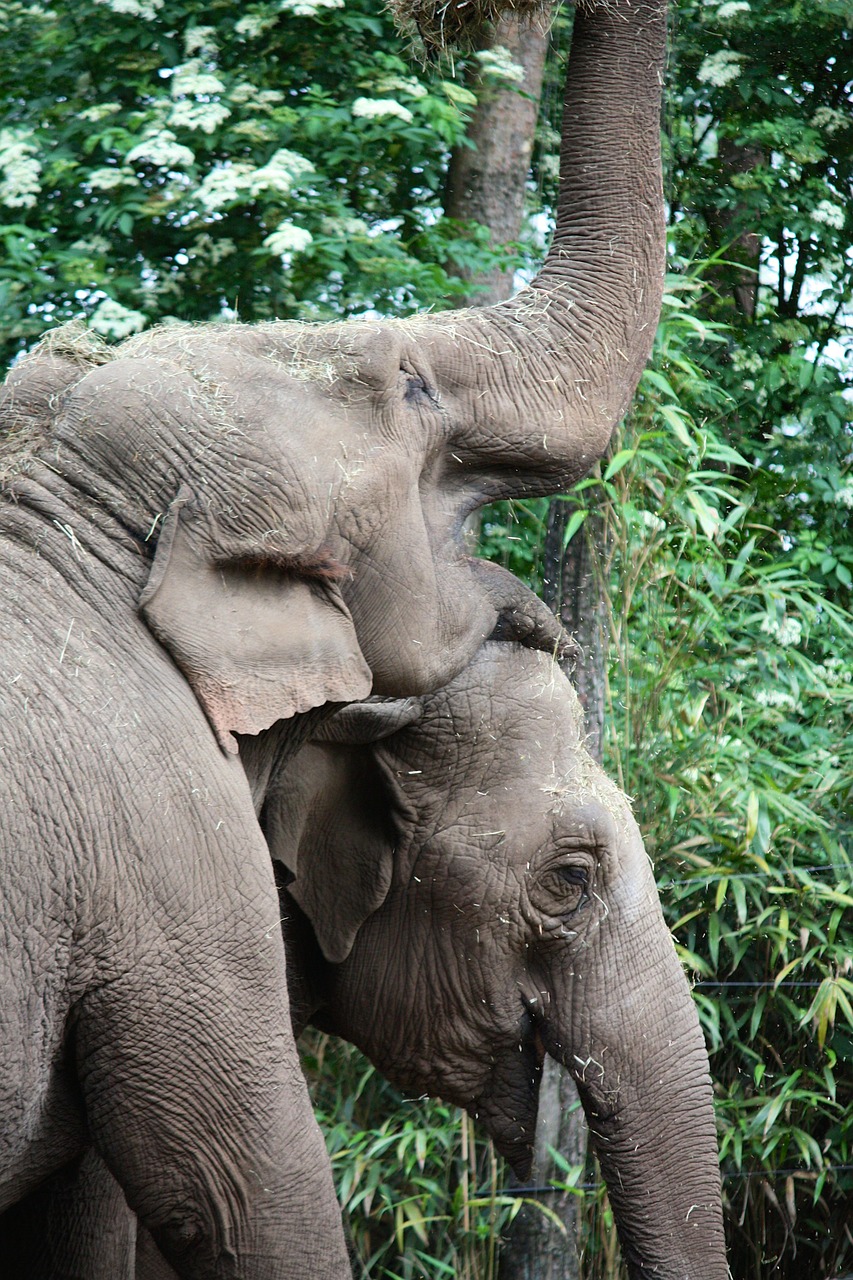

Behavior & Life
Ecology
The African bush elephant can be found in habitats as diverse as dry savannahs, deserts, marshes, and lake shores, and in elevations from sea level to mountain areas above the snow line. Forest elephants mainly live in equatorial forests, but will enter gallery forests and ecotones between forests and savannahs. Asian elephants prefer areas with a mix of grasses, low woody plants and trees, primarily inhabiting dry thorn-scrub forests in southern India and Sri Lanka and evergreen forests in Malaya. Elephants are herbivorous and will eat leaves, twigs, fruit, bark, grass and roots. They are born with sterile intestines, and require bacteria obtained from their mothers feces to digest vegetation. African elephants are mostly browsers while Asian elephants are mainly grazers. They can consume as much as 150 kg (330 lb) of food and 40 L (11 US gal) of water in a day. Elephants tend to stay near water sources. Major feeding bouts take place in the morning, afternoon and night. At midday, elephants rest under trees and may doze off while standing. Sleeping occurs at night while the animal is lying down. Elephants average 3–4 hours of sleep per day. Both males and family groups typically move 10–20 km (6–12 mi) a day, but distances as far as 90–180 km (56–112 mi) have been recorded in the Etosha region of Namibia. Elephants go on seasonal migrations in search of food, water and mates. At Chobe National Park, Botswana, herds travel 325 km (202 mi) to visit the river when the local waterholes dry up.
Because of their large size, elephants have a huge impact on their environments and are considered keystone species. Their habit of uprooting trees and undergrowth can transform savannah into grasslands; when they dig for water during drought, they create waterholes that can be used by other animals. They can enlarge waterholes when they bathe and wallow in them. At Mount Elgon, elephants excavate caves that are used by ungulates, hyraxes, bats, birds and insects. Elephants are important seed dispersers; African forest elephants ingest and defecate seeds, with either no effect or a positive effect on germination. The seeds are typically dispersed in large amounts over great distances. In Asian forests, large seeds require giant herbivores like elephants and rhinoceros for transport and dispersal. This ecological niche cannot be filled by the next largest herbivore, the tapir. Because most of the food elephants eat goes undigested, their dung can provide food for other animals, such as dung beetles and monkeys. Elephants can have a negative impact on ecosystems. At Murchison Falls National Park in Uganda, the overabundance of elephants has threatened several species of small birds that depend on woodlands. Their weight can compact the soil, which causes the rain to run off, leading to erosion.

Social Organization
Female elephants spend their entire lives in tight-knit matrilineal family groups, some of which are made up of more than ten members, including three pairs of mothers with offspring, and are led by the matriarch which is often the eldest female. She remains leader of the group until death or if she no longer has the energy for the role; a study on zoo elephants showed that when the matriarch died, the levels of faecal corticosterone ('stress hormone') dramatically increased in the surviving elephants. When her tenure is over, the matriarch's eldest daughter takes her place; this occurs even if her sister is present. The older matriarchs tend to be more effective decision-makers.
The social circle of the female elephant does not necessarily end with the small family unit. In the case of elephants in Amboseli National Park, Kenya, a female's life involves interaction with other families, clans, and subpopulations. Families may associate and bond with each other, forming what are known as bond groups. These are typically made of two family groups. During the dry season, elephant families may cluster together and form another level of social organisation known as the clan. Groups within these clans do not form strong bonds, but they defend their dry-season ranges against other clans. There are typically nine groups in a clan. The Amboseli elephant population is further divided into the "central" and "peripheral" subpopulations.
The social life of the adult male is very different. As he matures, a male spends more time at the edge of his group and associates with outside males or even other families. At Amboseli, young males spend over 80% of their time away from their families when they are 14–15. The adult females of the group start to show aggression towards the male, which encourages him to permanently leave. When males do leave, they either live alone or with other males. The former is typical of bulls in dense forests. Asian males are usually solitary, but occasionally form groups of two or more individuals; the largest consisted of seven bulls. Larger bull groups consisting of over 10 members occur only among African bush elephants, the largest of which numbered up to 144 individuals. A dominance hierarchy exists among males, whether they range socially or solitarily. Dominance depends on the age, size and sexual condition. Old bulls appear to control the aggression of younger ones and prevent them from forming "gangs". Adult males and females come together for reproduction. Bulls appear to associate with family groups if an oestrous cow is present.

Communication
Touching is an important form of communication among elephants. Individuals greet each other by stroking or wrapping their trunks; the latter also occurs during mild competition. Older elephants use trunk-slaps, kicks and shoves to discipline younger ones. Individuals of any age and sex will touch each other's mouths, temporal glands and genitals, particularly during meetings or when excited. This allows individuals to pick up chemical cues. Touching is especially important for mother–calf communication. When moving, elephant mothers will touch their calves with their trunks or feet when side-by-side or with their tails if the calf is behind them. If a calf wants to rest, it will press against its mother's front legs and when it wants to suckle, it will touch her breast or leg.
Visual displays mostly occur in agonistic situations. Elephants will try to appear more threatening by raising their heads and spreading their ears. They may add to the display by shaking their heads and snapping their ears, as well as throwing dust and vegetation. They are usually bluffing when performing these actions. Excited elephants may raise their trunks. Submissive ones will lower their heads and trunks, as well as flatten their ears against their necks, while those that accept a challenge will position their ears in a V shape.
Elephants produce several sounds, usually through the larynx, though some may be modified by the trunk. Perhaps the most well known is the trumpet, which is made during excitement, distress or aggression. Fighting elephants may roar or squeal, and wounded ones may bellow. Rumbles are produced during mild arousal and some appear to be infrasonic. Infrasonic calls are important, particularly for long-distance communication, in both Asian and African elephants. For Asian elephants, these calls have a frequency of 14–24 Hz, with sound pressure levels of 85–90 dB and last 10–15 seconds. For African elephants, calls range from 15–35 Hz with sound pressure levels as high as 117 dB, allowing communication for many kilometres, with a possible maximum range of around 10 km (6 mi).